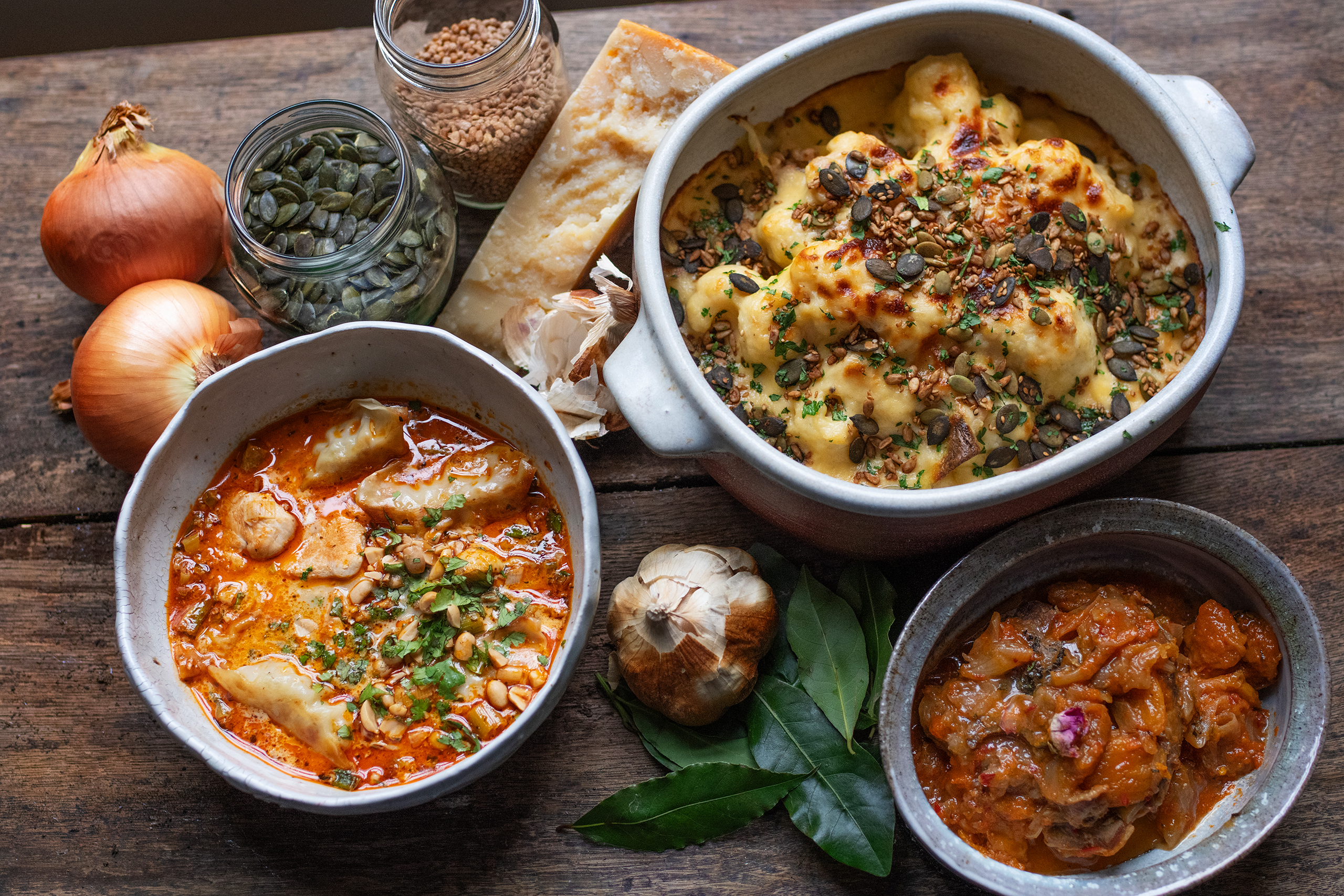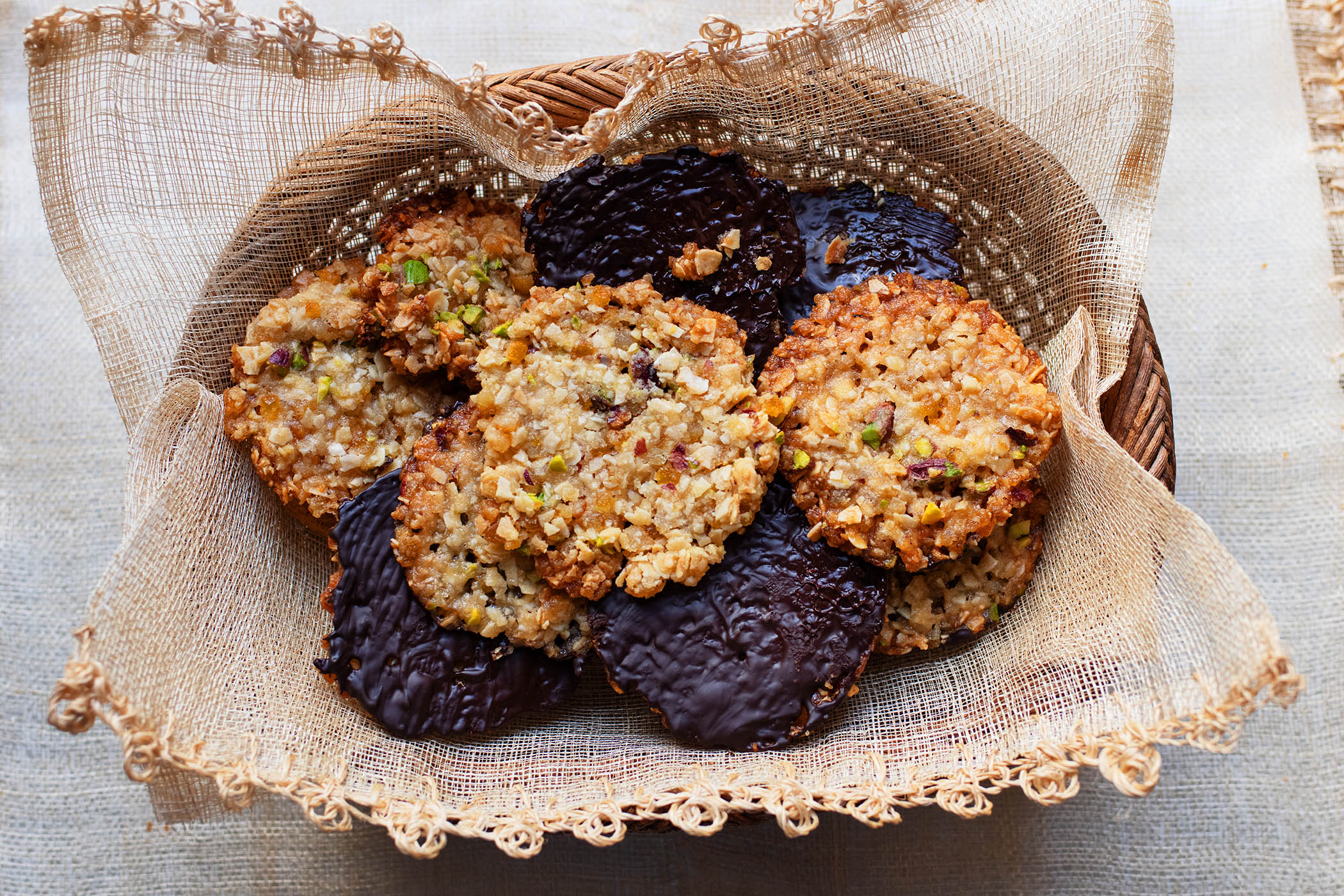A dish of lamb, a cheap cut on the bone, simmers away in the oven on a low heat, mingling with cumin and apricots, rose harissa and garlic, onions and ginger. A deeply warming recipe, fragrant and comforting. The gravy – sumptuous, spicy and fruity – is something you might want some warm flatbread for. It is just one of the cosy suppers that have been on the table this week.
As the weather has changed, I need richer, deeper, sweeter flavours than I did in the summer. I crave the scent of supper puttering away on the hob or in the oven. Though the most soothing of this week’s cosy suppers was mildly flavoured, a dish that soothed. Leeks and fennel were cooked down to a sweet tangle, then simmered with lemon, herbs and maftoul, the beads of couscous that turn soup into supper.
There was a new version of the beloved cauliflower cheese, this time involving the warmth of smoked garlic and the addition of haricot beans, both as textural contrast and for their ability to bolster us against the cold and wet. The most enduring of recipes, cauliflower in a blanket of a thoughtfully seasoned, slow-cooked cheese sauce always seems to hit the right note.
When I am not in the mood to peel and chop onions or braise meat on the bone or even make a cheese sauce, I will make my deeply aromatic “emergency comfort dinner”. A bowl of spiced coconut soup, thick with chilli and spring onions, is made in minutes. I add a sauteed chicken breast or fat prawns, then either noodles from a packet or gyoza from the freezer. I can have that one on the table in half an hour if I pull my finger out.
The onset of cold weather felt rather sudden this year. One minute I was in a T-shirt, the next, digging out my thermals. But it is good to be back at the stove, slipping dishes into the oven to get on with things themselves, slowly filling the kitchen with the smells of welcome and bonhomie. Food to cosy up with.
Related articles:
Lamb, apricot and rose harissa
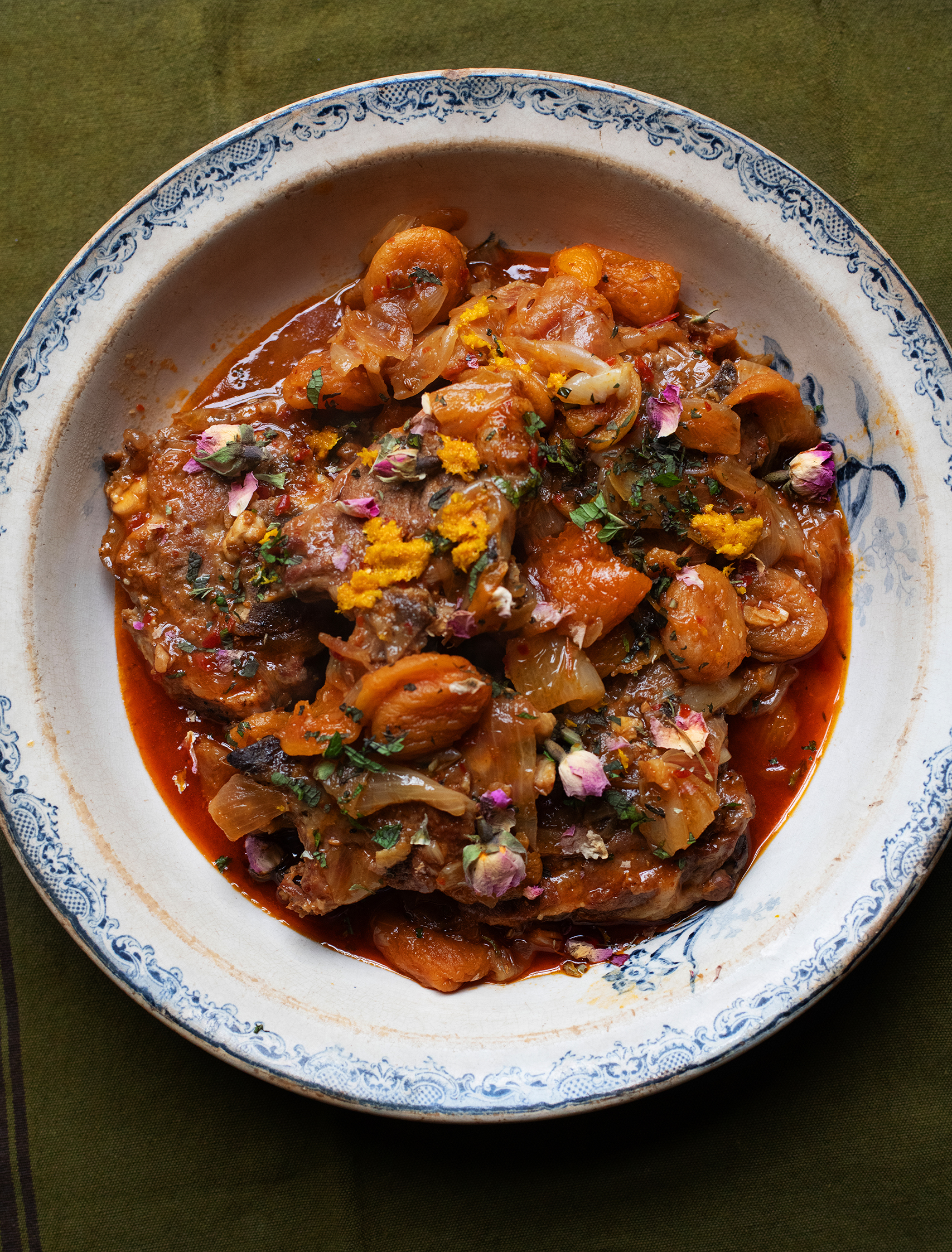
A fragrant dish with a deep notes of spice and aromatics and a subtle fruitiness. I ask the butcher for neck of lamb on the bone.
Much of the silkiness of the gravy comes from the slow cooking of the bones in the stock, which you don’t get from using pieces of meat off the bone, though you can use that too. Use whatever stock you have, chicken or vegetable is fine.
Serves 4
middle neck of lamb 1.25kg, on the bone
plain flour 3 tbsp
olive oil 2 tbsp
onions 2 medium
garlic 2 cloves
ginger 3cm piece
cumin seeds 1 tsp
ground coriander 2 tsp
crushed dried chillies ½-1 tsp
rose harissa paste 1½ tbsp
dried apricots 250g
stock or water 750ml
mint leaves a handful
orange zest a little, grated
dried rose petals a few
Dust the lamb with the flour and season with salt and pepper. Heat the oil in a large, heavy-based casserole for which you have a lid. Add the lamb to the pan and let the pieces brown lightly on all sides. You will probably need to do them in two batches. Remove them from the pan, leaving behind any oil. (If the oil has blackened, remove and add fresh.) Heat the oven to 160C fan/gas mark 4.
Peel the onions and roughly chop them. Add them to the pan and cook over a moderate heat. Thinly slice and add the garlic. Peel and grate the ginger, then stir in together with the cumin seeds and ground coriander. Add the crushed dried chillies and rose harissa paste. Stir in the dried apricots, then pour in the stock, return the browned lamb to the pan and bring to the boil. Cover with a lid and bake in the oven for 1 hour. Check the tenderness of the lamb, then, if necessary, cook for a further half hour or so, till the meat comes easily from its bones.
As you bring it to the table, scatter with mint leaves, grated orange zest and dried rose petals, and inhale.
Quick chicken curry soup with gyoza
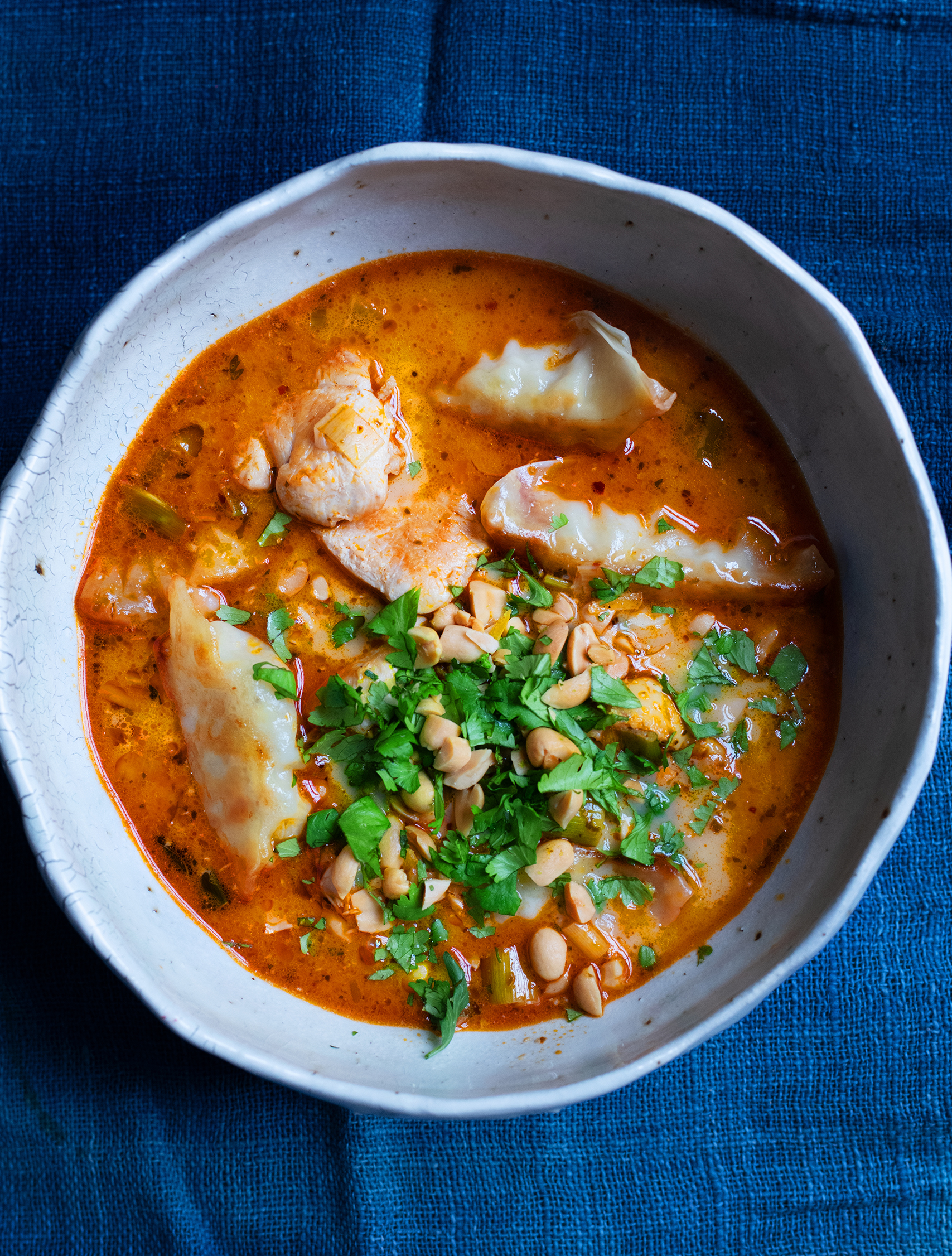
My go-to quick, comforting supper. The recipe has no real roots, it is simply one of my favourite things to eat. A chicken breast or two picked up on the way home, gyoza from the freezer and everything else from the fridge or cupboard – this is very much an emergency supper. The peanuts and coriander aren’t strictly necessary, but I include them if I’ve got them. If I have missed the butcher, then it will be frozen prawns, thawed and added straight to the spring onions.
Serves 2
chicken breast 250g
groundnut oil 4 tbsp
spring onions 6
garlic 2 plump cloves
ginger 2 tsp, grated
Thai red curry paste 6 tsp
chicken stock 500ml
coconut milk 3 tbsp
gyoza 8
roasted, salted peanuts 3 tbsp
juice of lime 1
fish sauce 1 tbsp (optional)
coriander leaves (optional)
Slice the chicken into finger-thick strips. Warm half the oil in a medium saucepan over a moderately high heat. Sizzle the chicken pieces in the oil for a few minutes until they are a pale gold in colour.
While the chicken is cooking, discard the roots and dark leaf tips from the spring onions then slice thinly and cook the spring onions for about 5 minutes till soft. Peel the garlic and grate finely, add to the spring onions with the grated ginger and cook for 2 or 3 minutes, then stir in the curry paste. Return the chicken to the pan, then pour in the stock and coconut milk and leave to simmer.
In a shallow pan, warm the remaining groundnut oil and add the gyoza, flat side down, letting them cook for 5 minutes or until the bases are golden brown and starting to crisp. Pour in 100ml of water and quickly cover with a lid. Let the dumplings steam and pop for 3 or 4 minutes, then lift them out from the pan and transfer into deep bowls.
Roughly chop the peanuts.
Season the soup with the juice of the lime and the fish sauce, if using, then ladle into the soup bowls. Scatter over the peanuts and, if you wish, torn coriander leaves.
Cauliflower, smoked garlic, haricot
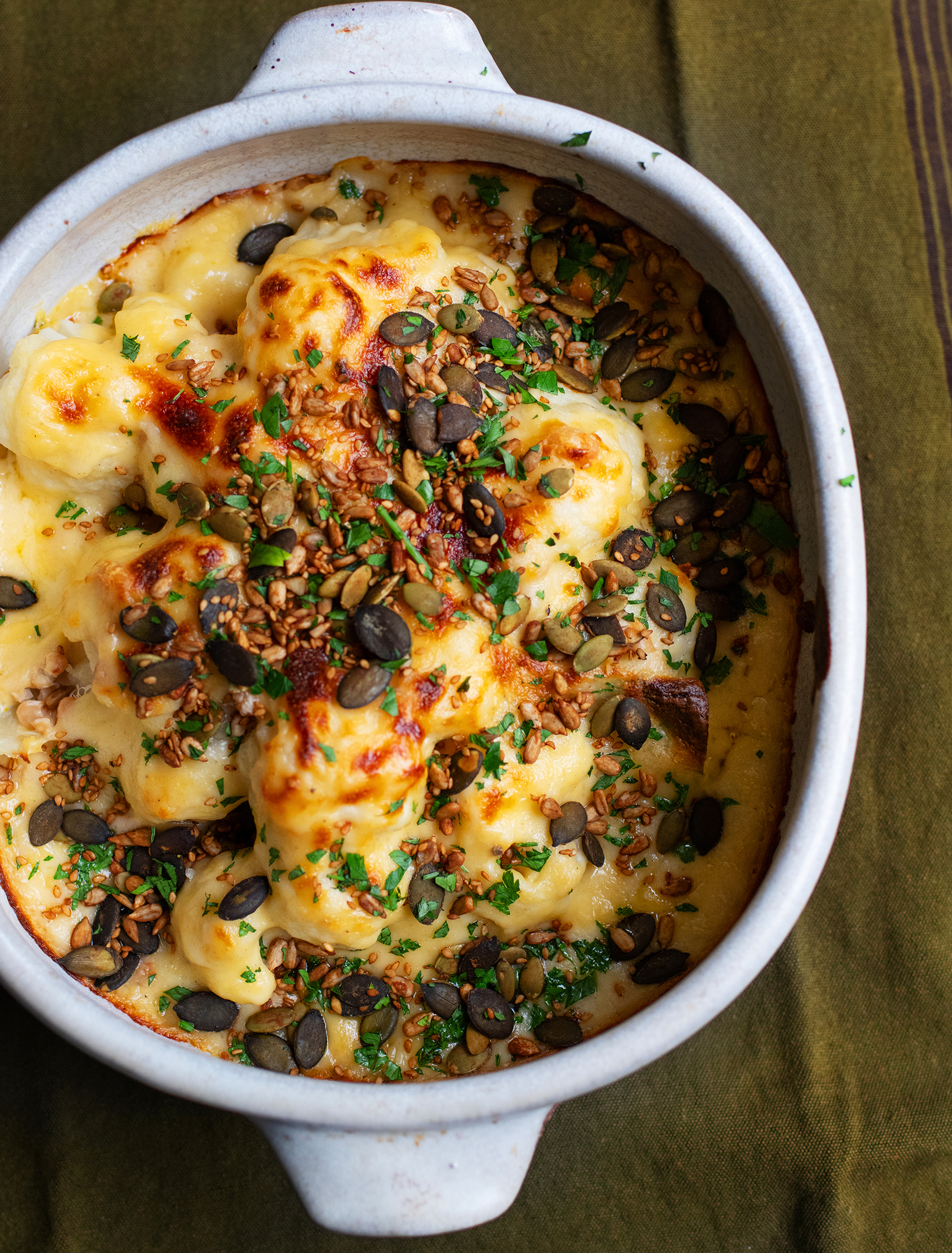
I have held a soft spot for cauliflower cheese since my domestic science lessons at school. Made with a slowly simmered cheese sauce (bay leaves, peppercorns, two cheeses), it is both homely and deeply comforting. I ring the changes now and again, using different combinations of cheese, flavouring the sauce with smoked garlic. When the dish is to be a main course, I like to introduce haricot or butter beans.
Serves 2 as a main, 4 as a side
milk 500ml
bay leaves 3
smoked garlic 2 large cloves
butter 50g
plain flour 50g
cauliflower 1 medium to large
cheddar cheese 150g
parmesan 15g, grated
haricot beans 1 x 400g tin
For the topping:
sunflower seeds 20g
pumpkin seeds 30g
sesame seeds 5g
groundnut oil 1 tbsp
dark soy sauce 3 tbsp
parsley 4 tbsp, chopped
Warm the milk in a medium saucepan with the bay leaves and whole smoked garlic cloves. Bring almost to the boil, then remove from the heat.
In a medium pan with a heavy base, melt the butter, then stir in the flour and let it cook to a pale biscuit-coloured paste. Gradually pour in the milk, including the bay leaves and garlic cloves, and grind in a little black pepper, stirring continually.
Turning the heat low, leave the sauce to putter for about 15 minutes, stirring regularly, taking care that it doesn’t catch and burn.
Bring a pan of water to the boil. Break the cauliflower into large florets. Rest a steamer basket on top of the saucepan and cook the cauliflower until tender to the point of a knife, then remove from the heat. (If you have no steamer, cook the cauliflower in boiling water instead.) Tip into a baking dish and heat the oven to 180C fan/gas mark 6.
Coarsely grate the cheddar cheese, then stir it into the sauce with half of the grated parmesan and continue cooking for a further 5 minutes. Taste and season with a little salt if necessary. Drain the beans and scatter over the cauliflower. Remove the bay leaves and garlic from the sauce and spoon it over the cauliflower, then sprinkle with the reserved parmesan cheese. Bake for 35 minutes.
While the cauliflower bakes, make the seed mixture. Put the sunflower, pumpkin and sesame seeds in a non-stick frying pan over a moderate heat, trickle over the oil, then stir in the soy sauce. Let the seeds cook for a couple of minutes until they have absorbed the oil and soy, then mix with the chopped parsley and set aside.
When the cauliflower is patchily golden on top, scatter with the seed and parsley mixture and serve.
Fennel, leek, maftoul and lemon
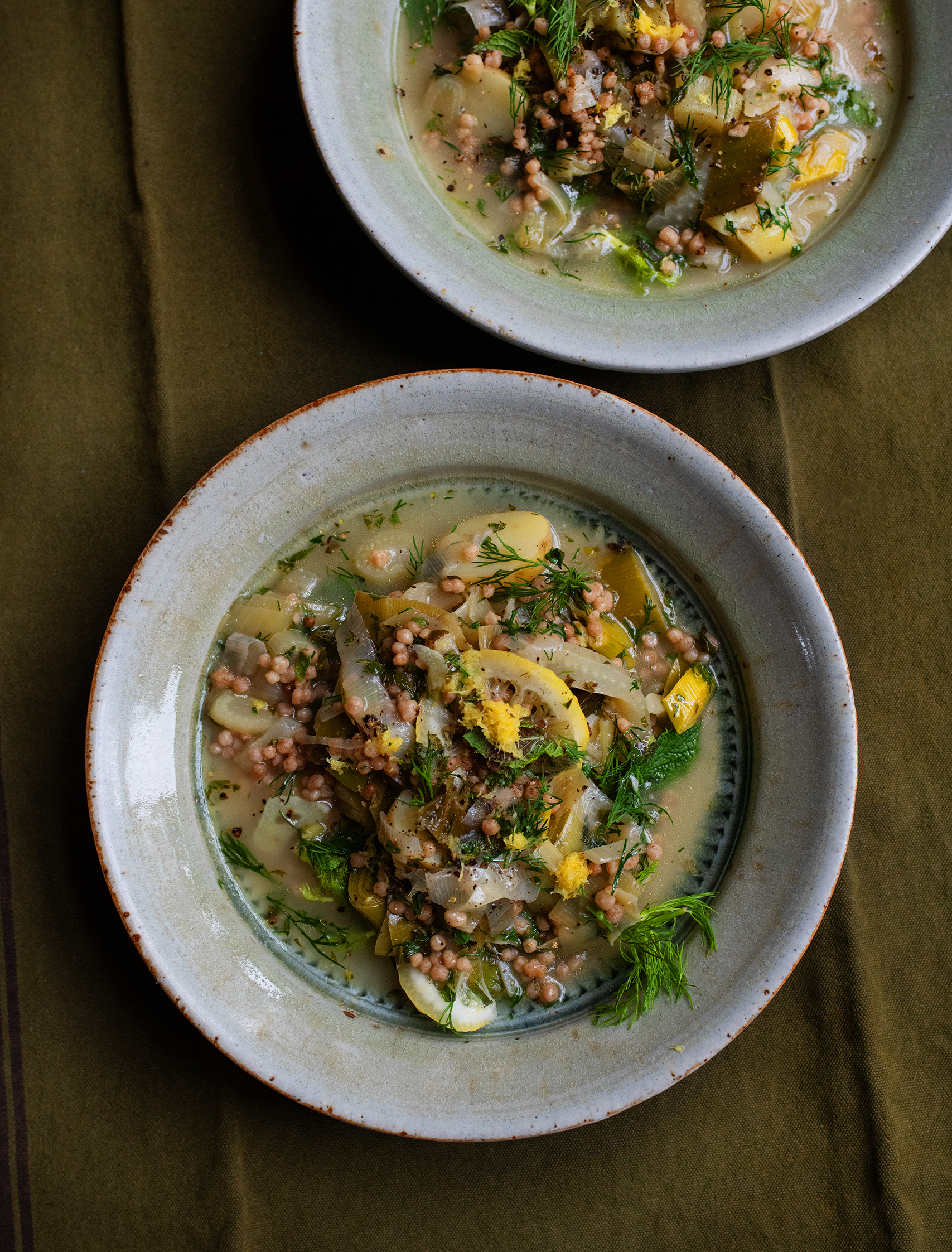
A comforting supper of gentle flavours with notes of citrus and mint. Double carbs – couscous and potatoes – so a dish for a cool day.
I used Palestinian maftoul, the grains slightly smaller than the usual giant couscous, introducing a silky, sustaining note to the dish.
I have deliberately kept the flavours soothing and mild, but you could introduce more garlic if you wish or a teaspoon of ground cumin, added with the coriander seeds.
The herbs are essential, lending a vibrancy to the broth, which you can ladle around the vegetables. The dish will reheat quite well the following day if you need.
Serves 4
leeks 500g
olive oil 3 tbsp
fennel 1 head
small waxy potatoes 250g
garlic 3 plump cloves
coriander seeds 1 tsp
lemon ½
vegetable stock 750ml
maftoul or moghrabieh (giant couscous) 150g
dill a handful
mint leaves a handful
Discard the root and dark tips of the leeks (they are good for stock), then slice into 1cm thick pieces.
Warm the olive oil in a deep pan over a low heat, stir in the leeks and partially cover with a lid so the leeks cook in their own steam.
Thinly slice the fennel (save any fronds for later) and add to the leeks. Halve each potato and stir them into the leeks and fennel. Peel and thinly slice the garlic, then add to the pan with the coriander seeds. Thinly slice the lemon half, then stir in together with a generous seasoning of salt and finely ground black pepper.
When the leeks have softened, pour in the stock, turn up the heat and bring to the boil, then simmer while you cook the maftoul. Tip the maftoul or moghrabieh into a saucepan and cover with 500ml of water. Bring to the boil, lower the heat a little and simmer till tender and swollen (about 12 minutes for maftoul, a little longer for moghrabieh, or according to packet instructions). If the water evaporates too quickly, pour in a little more. When it is ready, stir into the leeks together with half the dill and mint, roughly chopped.
Taste the broth for seasoning, grinding in a little more salt or pepper as necessary. Chop any reserved fennel fronds, dill and mint and stir them in. Ladle into shallow bowls.
